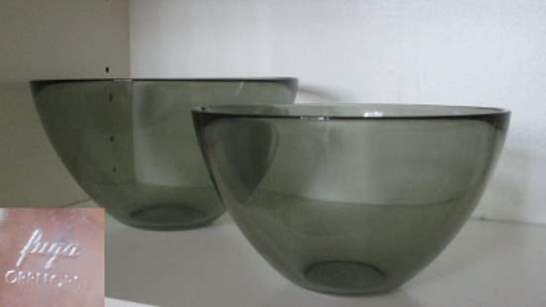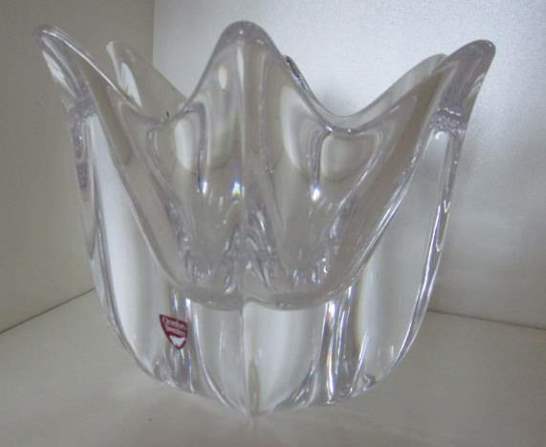Centrifuging glass
In the 1940ies some people started to experiment with the centrifuging of glass, as a technique to manufacture
thicker bowls.
One of the anecdotes often told is that NN saw someone using a butter churn and started to think.
A more plausible story is that NN saw a
milk separator...
So, who was NN, who was the first?
A common opinion says it was Sven Palmqvist at Orrefors, another says it was Magni Magnusson at Skruf. The idea might have been "in the air", but fact is that Palmqvist was given both a Swedish and an American patent.
According to the book Sven Palmqvist - glaskonstnär (ISBN 9188 712 86 9) the first patent
application was filed in 1943, for a "device to manufacture glass objects".
This device was rather primitive: hand operated, with a removable mould which had to be detached to tip out the
centrifuged object.
One problem with the first centrifuge was that it did not have a stop collar at the top - the book mentions
(my translation): "The molten glass could, at high speed, escape over the top of the mould, thus burning
the pants of the operator".
Another patent application was filed in 1946, now for a bettered device: it now had a collar, and was also powered
with an electric motor.
At this point Magni Magnusson intervened: he had filed an application in 1941 for something similar. In 1951,
the case was resolved, and the Swedish patent no 133629 was awarded to Palmqvist (see link above).




